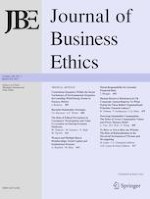26.09.2019 | Original Paper
Powering Sustainable Consumption: The Roles of Green Consumption Values and Power Distance Belief
Erschienen in: Journal of Business Ethics | Ausgabe 3/2021
EinloggenAktivieren Sie unsere intelligente Suche, um passende Fachinhalte oder Patente zu finden.
Wählen Sie Textabschnitte aus um mit Künstlicher Intelligenz passenden Patente zu finden. powered by
Markieren Sie Textabschnitte, um KI-gestützt weitere passende Inhalte zu finden. powered by
